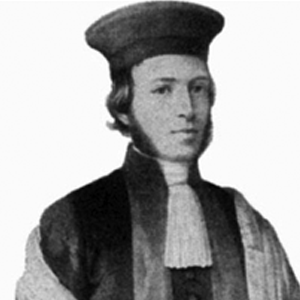Hazzan, composer, and writer. Born in Dennelohe, near Ansbach (Bavaria), the descendant of almost ten generations of south German ḥazzanim, Naumbourg received his musical education at Munich and sang there in Maier *Kohn’s synagogue choir. After an engagement as choirmaster in Strasbourg, he came to Paris in 1843. In 1845 he was appointed first ḥazzan at the synagogue in the Rue Notre-Dame-de-Nazareth, under the sponsorship of Jacques Fromental *Halévy and with the government authorization to carry out his plans for a thorough reform of liturgic music (which had lapsed into disorder after the death of Israel *Lovy in 1832). In 1847 he published the first two volumes of his Zemirot Yisrael (vol. 1 for the Sabbath, vol. 2 for the High Holidays), with vol. 3 Hymnes et Psaumes added when the work was reissued in 1864 (repr. 1874, 1954). In 1874 he brought out a collection of traditional synagogue melodies, Aguddat Shirim, which also included some western Sephardi material, and a long preface on the history of Jewish religious music. In 1877 Naumbourg published the first modern edition of Salamone de *Rossi’s Ha-Shirim Asher li-Shelomo (30 out of 33 pieces) and a selection of his madrigals, with the collaboration of Vincent d’Indy, under the name of Cantiques de Salamon Rossi; the historical importance of the undertaking is in no way diminished by its many editorial failings and liberties. Naumbourg’s Zemirot Yisrael achieved an influence comparable to the works of his senior Solomon *Sulzer and his junior Louis *Lewandowsky. The pieces are set for ḥazzan and 2- to 4-part choir, with some organ accompaniments and, apart from Naumbourg’s own compositions and arrangements, include some melodies by Lovy and two works by Halévy and *Meyerbeer. About half of the pieces are based on traditional material, mainly south German. The others reflect the various styles then current in the Parisian grand opera, which “gave to Naumbourg’s work some international features and helped it to become widely known, and much liked and used” (Idelsohn).
BIBLIOGRAPHY:
Sendrey, Music, index; Idelsohn, Music, 262–6 and index.


10 thoughts on “Kaminos”
Was Nicholas related to Alexander Saslavsky who married Celeste Izolee Todd?
Anyone have a contact email for Yair Klinger or link to score for Ha-Bayta?
wish to have homeland concert video played on the big screen throughout North America.
can organize here in Santa Barbara California.
contacts for this needed and any ideas or suggestions welcomed.
Nat farber is my great grandpa 😊
Are there any movies or photos of max kletter? His wife’s sister was my stepmother, so I’m interested in seeing them and sharing them with his wife’s daughter.
The article says Sheb recorded his last song just 4 days before he died, but does not tell us the name of it. I be curious what it was. I’d like to hear it.
Would anyone happen to know where I can find a copy of the sheet music for a Gil Aldema Choral (SATB) arrangement for Naomi Shemer’s “Sheleg Al Iri”. (Snow on my Village)?
Joseph Smith
Kol Ram Community Choir, NYC
שלום שמעון!
לא שכחתי אותך. עזבתי את ישראל בפברואר 1998 כדי להביא את בני האוטיסט לקבל את העזרה המקצועית שלא הייתה קיימת אז בישראל. זה סיפור מאוד עצוב וטרגי, אבל אני הייתי היחיד עם ביצים שהביא אותו והייתי הורה יחיד בשבילו במשך חמישה חודשים. הוא היה אז בן 9. כעת הוא בן 36 ומתפקד באופן עצמאי. נתתי לו הזדמנות לעתיד נורמלי. בטח, אבות כולם חרא, אומרים הפמינציות, אבל כולם צריכים לעבוד כמטרות במטווחי רובה!
משה קונג
(Maurice King)
Thank you for this wonderful remembrance of Herman Zalis. My late father, Henry Wahrman, was one of his students. Note the correct spelling of his name for future reference. Thank you again for sharing this.
Tirza Wahrman (Mitlak)
amazing zchuso yagein aleinu, he wrote the famous niggun Lefichuch that is sung in almost every Israeli Yeshiva